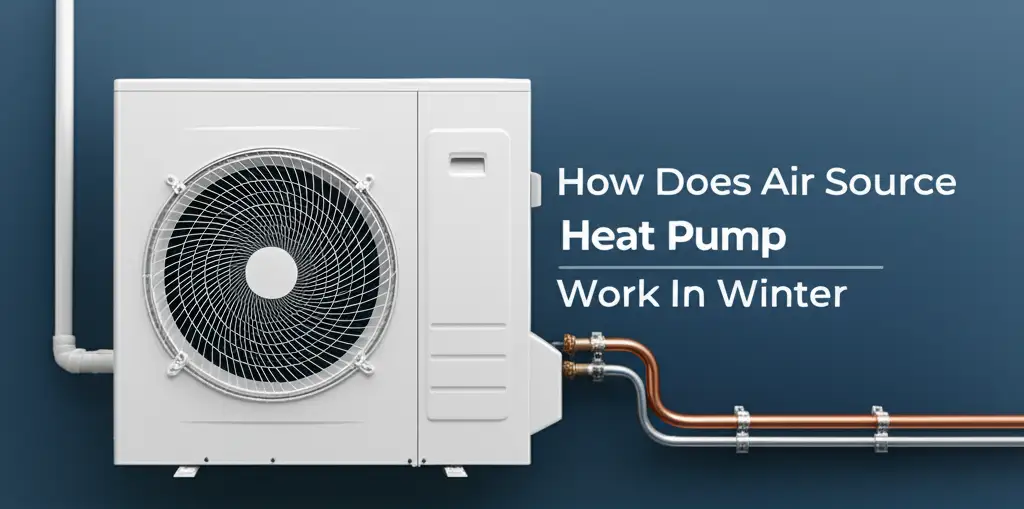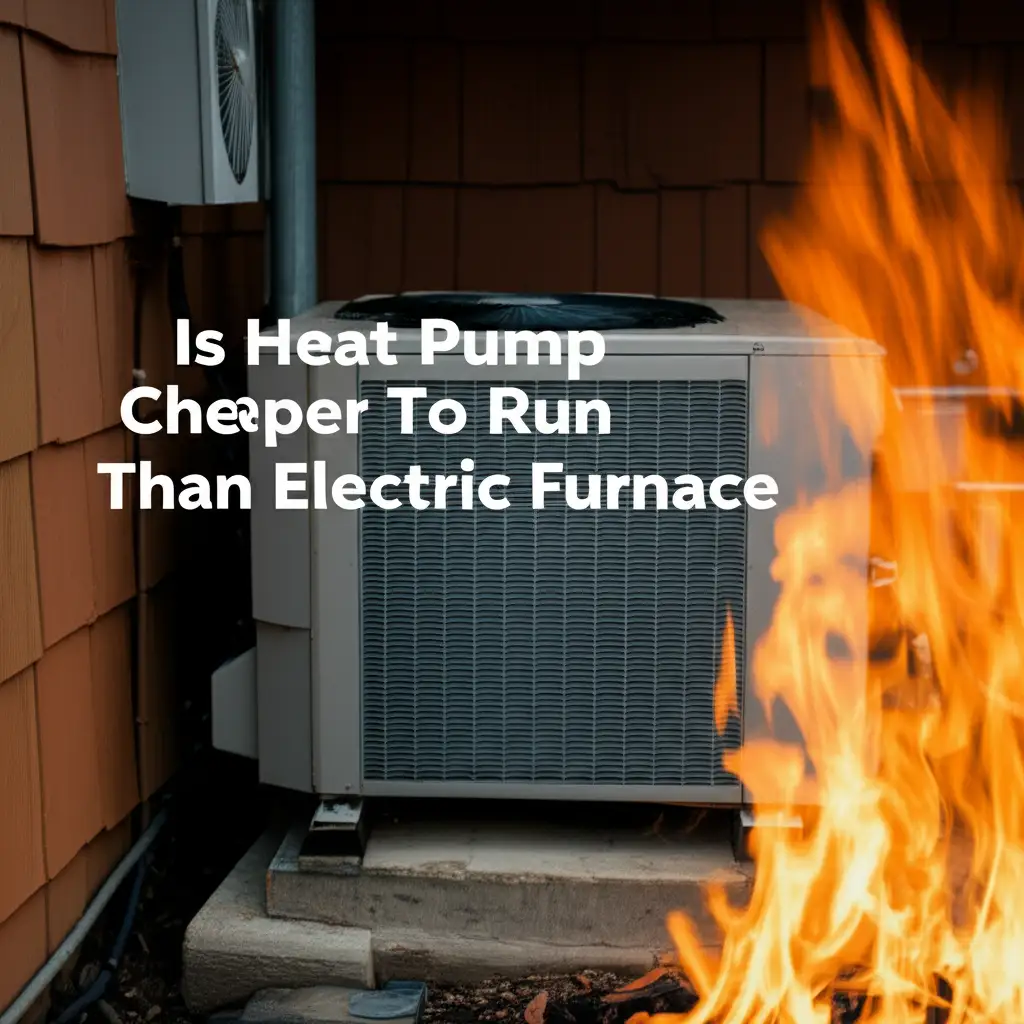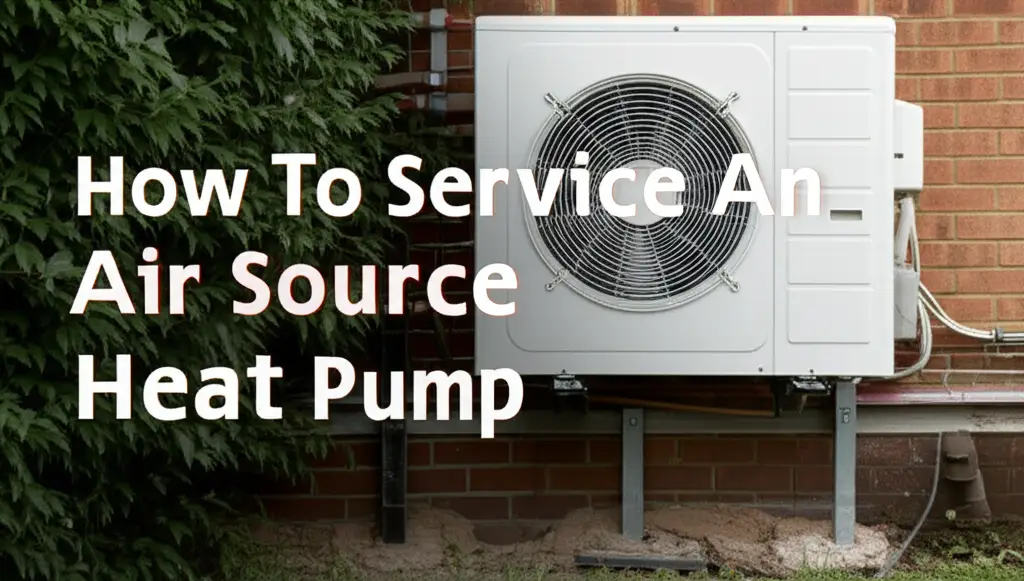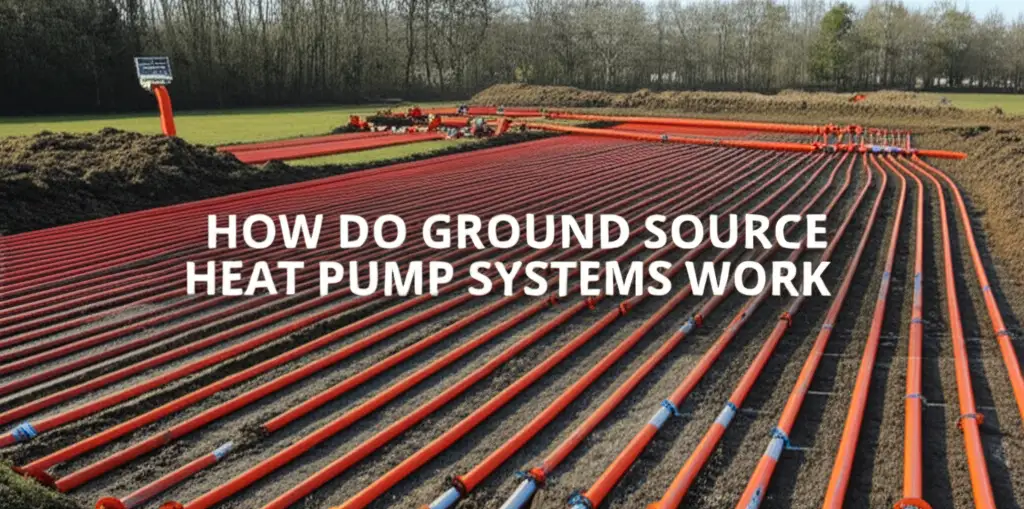· Katria Melrose · Home Heating · 19 min read
How Does Air Source Heat Pump Work In Winter

Air Source Heat Pumps in Winter: Your Guide to Cold Weather Performance
When the temperature drops, many people wonder if an air source heat pump can truly keep their home warm. It is a common question. Air source heat pumps draw heat from the outside air, even when it feels very cold to us. This guide will explain how air source heat pumps work in winter. We will look at the science, the technology, and how these systems deliver warmth efficiently.
Understanding how these pumps operate during cold months helps you make informed decisions. We will cover the core principles of heat extraction. We will discuss specific features that boost performance in low temperatures. You will learn about system efficiency, proper installation, and essential maintenance. This article aims to give you a complete picture of air source heat pump winter performance.
Takeaway:
- Air source heat pumps effectively extract heat from cold outdoor air using refrigerant.
- Advanced technologies like EVI compressors and intelligent defrost cycles enhance winter performance.
- System efficiency (COP) varies with temperature, but heat pumps remain energy-efficient even in very cold conditions.
- Proper sizing and professional installation are crucial for optimal winter heating.
- Regular maintenance ensures consistent and reliable operation throughout the heating season.
- Heat pumps often use supplemental heat or run continuously to maintain comfort in extreme cold.
How does an air source heat pump work in winter?
An air source heat pump works in winter by extracting latent heat from the cold outdoor air. It compresses a refrigerant to raise its temperature and then transfers this heat indoors. The system performs this task even when outside temperatures are below freezing. It provides efficient heating for your home.
The Fundamental Principle: How Air Source Heat Pumps Extract Heat
Many homeowners question how an air source heat pump works in winter. They wonder if it can really pull heat from freezing air. The truth is, air always contains some heat energy, even at very low temperatures. Air source heat pumps use a scientific principle to extract this energy. They then move it into your home. This process works much like a refrigerator, but in reverse. A refrigerator removes heat from inside and expels it outside. A heat pump takes heat from outside and brings it inside.
The system uses a special fluid called refrigerant. This refrigerant flows through a closed loop of coils. It changes state from a liquid to a gas and back again. The key is that refrigerants have very low boiling points. This means they can absorb heat from cold air. The outdoor unit contains an evaporator coil. Cold refrigerant passes through this coil. As cold outdoor air blows over the coil, the refrigerant absorbs the available heat. This causes the refrigerant to evaporate and turn into a low-pressure gas.
Next, a compressor pumps the low-pressure gas to a higher pressure. This compression also raises the temperature of the refrigerant significantly. The hot, high-pressure gas then flows to the indoor unit, which contains a condenser coil. Inside your home, cooler air passes over this hot coil. The refrigerant releases its heat into your indoor air. As it releases heat, the refrigerant condenses back into a liquid. It then flows through an expansion valve, which lowers its pressure and temperature. The now cold, low-pressure liquid returns to the outdoor unit. The cycle then begins again. This continuous process effectively moves heat from the outside air into your home, even on the coldest days.
Evaporator Coil Function
The evaporator coil is where the magic begins in winter. It is located in the outdoor unit. The refrigerant inside this coil is very cold, often colder than the outside air. Even if the outside air is 20 degrees Fahrenheit, the refrigerant might be 10 degrees Fahrenheit. This temperature difference causes heat to flow from the air into the refrigerant.
The refrigerant absorbs this heat. It then changes from a liquid into a gas. This transformation is crucial for the heat pump’s ability to operate in winter. The surface area of the coil is large. This allows for maximum heat absorption from the outdoor environment.
Compressor’s Role
The compressor is the heart of the air source heat pump system. It draws in the low-pressure, gaseous refrigerant from the evaporator coil. It then squeezes or compresses this gas. This action significantly increases the pressure and temperature of the refrigerant. Think of it like inflating a bicycle tire quickly; the pump gets warm.
The compressor ensures the refrigerant becomes hot enough. It must be hotter than your desired indoor temperature. This temperature difference allows the heat to transfer efficiently into your home. The compressor is vital for moving heat against the natural temperature gradient, from cold outside to warm inside. Understanding how does an air source heat pump work in cold weather highlights the compressor’s role in maintaining indoor comfort.
Overcoming the Cold: Key Technologies for Winter Performance
Modern air source heat pumps feature advanced technologies. These innovations specifically address the challenges of cold weather. Older heat pump models struggled more in very low temperatures. Today’s systems can provide efficient heating even when temperatures drop well below freezing. These technologies ensure reliable performance and consistent warmth throughout the winter months. They are central to how air source heat pumps work in winter effectively.
One major advancement is the use of variable-speed compressors. Unlike older, single-speed compressors that are either “on” or “off,” variable-speed models can adjust their output. They can run at lower speeds when less heat is needed. They can ramp up when demand is high. This allows them to precisely match your home’s heating needs. This flexibility means they consume less energy. It also means they maintain more stable indoor temperatures. This avoids the uncomfortable temperature swings of traditional systems. These compressors improve efficiency, especially in milder cold conditions.
Another crucial innovation is Enhanced Vapor Injection (EVI) technology. EVI heat pumps have an extra stage of compression. This process injects a portion of the refrigerant gas back into the compressor at an intermediate stage. This boosts the refrigerant’s temperature more efficiently. It allows the heat pump to produce warmer air even when outdoor temperatures are very low. EVI technology significantly extends the heat pump’s operating range. It makes it a viable primary heating source in colder climates. These systems maintain higher Coefficient of Performance (COP) values in freezing conditions. They also reduce the reliance on supplemental electric resistance heating.
Defrosting Mechanisms and Their Importance
When temperatures drop and humidity rises, ice can build up on the outdoor coil. This happens as the heat pump extracts heat from the cold, moist air. The ice layer acts as an insulator. It prevents the coil from efficiently absorbing heat. To counter this, heat pumps have a defrost cycle. During defrost, the system briefly reverses its operation. It sends hot refrigerant to the outdoor coil. This melts the ice.
The defrost cycle is vital for maintaining efficiency. Without it, ice would quickly accumulate. This would severely reduce the heat pump’s ability to provide warmth. You might notice a temporary decrease in warm air indoors during defrost. The outdoor unit may also make a hissing sound as ice melts. This is normal operation. Many modern heat pumps use intelligent defrosting. They only defrost when necessary. This saves energy. If you notice your heat pump freezing up often, or not defrosting, it indicates an issue. Understanding why does my air source heat pump freeze up helps in troubleshooting. Knowing how to keep heat pump from freezing in winter can prevent service calls.
Variable Speed Compressors and EVI Technology
Variable speed compressors are a game-changer for air source heat pumps in winter. They allow the heat pump to run at various speeds. This lets them precisely match your home’s heating needs. If it is only slightly cold, the compressor runs at a lower speed. This uses less energy. If temperatures drop sharply, it speeds up to provide more heat. This precise control means less energy waste and more consistent indoor temperatures.
EVI technology builds on this by boosting performance in extreme cold. It introduces an extra step in the refrigerant cycle. This allows the system to reach higher temperatures at the compressor output. This means warmer air supply into your home. It maintains better efficiency when the outside air is well below freezing. This combination makes modern heat pumps robust heating solutions for cold climates.
Understanding Efficiency (COP) in Colder Climates
When discussing how air source heat pumps work in winter, efficiency is a key factor. The efficiency of a heat pump is measured by its Coefficient of Performance (COP). COP is the ratio of heat energy delivered to the electrical energy consumed. For example, a COP of 3 means the heat pump delivers 3 units of heat energy for every 1 unit of electrical energy it uses. This makes heat pumps significantly more efficient than traditional electric resistance heaters, which have a COP of 1.
The COP of an air source heat pump does change with the outdoor temperature. As the outdoor temperature drops, it becomes harder for the heat pump to extract heat from the air. This causes the COP to decrease. For instance, a heat pump might have a COP of 4 when the outside temperature is 45°F. That same heat pump might have a COP of 2.5 when the temperature is 15°F. Even at lower COPs, heat pumps still offer a substantial energy-saving advantage over electric furnaces or baseboard heaters. They are still highly efficient compared to direct electric heat.
This reduced COP in very cold conditions is why some heat pumps include a supplemental heating element. This element is typically an electric resistance heater. It kicks in when the heat pump alone cannot meet the heating demand. This usually happens at very low “balance points” or “bivalence points.” The balance point is the outdoor temperature at which the heat pump’s heating capacity equals your home’s heat loss. Below this point, the supplemental heat assists the heat pump. Modern cold-climate heat pumps have very low balance points, sometimes below 0°F (-18°C). This means they rely less on supplemental heat than older models. This helps maintain energy efficiency even in harsh winters. Understanding how much energy does air source heat pump use helps homeowners manage costs.
Factors Affecting Winter Efficiency
Several factors influence an air source heat pump’s efficiency during winter. The primary factor is the outdoor ambient temperature. As mentioned, lower temperatures reduce the COP. However, system design and insulation play significant roles too. A well-insulated home requires less heat to begin with. This means the heat pump can operate more efficiently. It will not have to work as hard.
Proper sizing of the heat pump also matters. An undersized unit will struggle to meet demand in cold weather. An oversized unit might short-cycle, which also reduces efficiency. Humidity levels can also affect efficiency. High humidity can lead to more frequent defrost cycles. This temporarily reduces heating output. Ensuring your home has good air sealing and insulation will help maximize your heat pump’s winter efficiency. This will directly impact why is my air source heat pump costing so much or saving you money.
Supplemental Heating and Bivalence Point
Supplemental heating is a crucial component for air source heat pumps in very cold climates. This is often an electric resistance coil. It activates when the heat pump’s capacity alone cannot satisfy the home’s heating needs. The point at which this happens is called the “bivalence point” or “balance point.” This temperature varies for each home and heat pump system. It depends on factors like insulation, window quality, and the specific heat pump’s design.
Above the bivalence point, the heat pump provides all the necessary heat. Below it, the supplemental heat kicks in to assist. Modern cold-climate heat pumps have very low bivalence points, sometimes even below -5°F (-20°C) or lower. This means they can handle most winter heating without relying heavily on expensive electric resistance heat. This design ensures your home stays warm even during the coldest snaps.
System Sizing and Installation for Optimal Winter Operation
The success of an air source heat pump in winter heavily depends on its correct sizing and professional installation. These are not areas to cut corners. An improperly sized or poorly installed system will not perform as expected. It may lead to discomfort, higher energy bills, and premature system failure. Ensuring the system is tailored to your specific home’s needs is paramount for efficient winter heating.
System sizing involves a detailed calculation of your home’s heating load. This is not simply based on square footage. Factors like insulation levels, window types, air leakage, local climate, and ceiling height all play a role. A qualified HVAC professional performs a “load calculation.” This determines how much heat your home loses in the coldest outdoor conditions. The heat pump’s capacity must match or slightly exceed this calculated load. An undersized heat pump will struggle to keep your home warm on the coldest days. It will rely too much on supplemental heating. An oversized heat pump might cycle on and off too frequently. This reduces efficiency and can shorten the lifespan of the equipment.
Proper installation also dictates how well an air source heat pump works in winter. The outdoor unit needs adequate airflow around it. It should not be obstructed by snow, shrubs, or other barriers. Clearances specified by the manufacturer must be maintained. The unit must also be level and securely mounted. This prevents vibration and ensures proper drainage for defrost cycles. The refrigerant lines must be correctly sized and meticulously sealed. Any leaks will severely compromise efficiency and performance. Electrical connections must meet local codes and the manufacturer’s specifications. A professional installer ensures all these details are handled correctly. They also optimize the system for your home’s unique layout and climate. Thinking about how to design an air source heat pump system must include these considerations.
Proper Sizing for Cold Climates
Sizing an air source heat pump for a cold climate is a specialized task. It requires careful consideration of the lowest expected temperatures. The goal is to select a unit that can meet the home’s heating needs without excessive reliance on supplemental heat. This is often different from sizing an air conditioner. Air conditioners are sized for peak cooling loads. Heat pumps for heating need to consider continuous operation in cold.
A professional uses industry standards to calculate your home’s heat loss. They factor in insulation, windows, and air tightness. The chosen heat pump should have a capacity curve that aligns with your home’s heat loss curve. This ensures comfort and efficiency, especially when winter temperatures plummet.
Ideal Installation Site
The location of your outdoor air source heat pump unit affects its winter performance. The unit needs good airflow. Avoid placing it in small, enclosed spaces. Keep it away from dryer vents or exhaust fans, as these can blow moist air onto the coils. This increases frost buildup. Also, ensure the unit is elevated off the ground, typically 6-12 inches. This protects it from snow accumulation. It also allows proper drainage of defrost water.
While some people wonder does an air source heat pump need to be in the sun, sun exposure is not critical. The unit extracts heat from the air, not direct sunlight. Proper clearance from walls and other obstructions is more important than sun exposure for maximizing airflow and preventing ice buildup.
Integrating Air Source Heat Pumps with Existing Systems
When considering how an air source heat pump works in winter, it is important to understand its integration capabilities. Not every home needs a brand-new, standalone heat pump system. Air source heat pumps can seamlessly integrate with existing heating systems. This offers flexibility and can improve overall energy efficiency. This is particularly true for homes with existing ductwork or hydronic systems.
One common integration strategy is a “hybrid” or “dual fuel” system. In this setup, an air source heat pump is paired with a traditional furnace (gas, oil, or propane). The heat pump becomes the primary heating source for most of the winter. It provides efficient warmth down to its bivalence point. When temperatures drop below this point, or when heating demand is exceptionally high, the furnace automatically takes over. This combines the high efficiency of the heat pump for moderate cold with the robust heating power of a furnace for extreme conditions. This setup provides comfort and energy savings. It leverages the strengths of both systems. It also reduces reliance on the more expensive fossil fuel furnace during milder winter days.
Air source heat pumps can also integrate with hydronic systems, such as radiant floor heating or radiators. Special low-temperature heat pumps are designed for this. They produce hot water at lower temperatures more efficiently than traditional boilers. For homes with how does an air source heat pump work with underfloor heating, the heat pump can be a very efficient heat source. This is because underfloor heating operates at lower water temperatures than radiators. For radiators, the heat pump may need to run longer or at a higher output. This means it may have a slightly lower COP compared to underfloor heating. This setup is known as an “air-to-water” heat pump system. It involves an outdoor unit transferring heat to water circulating through your home’s hydronic distribution system. This allows homeowners to upgrade their heating without replacing their entire heat distribution infrastructure.
Hybrid Heating Solutions
Hybrid heating systems offer a practical solution for many homeowners. They merge the efficiency of an air source heat pump with the reliability of a traditional furnace. The system’s controls automatically switch between the heat pump and the furnace based on outdoor temperature and energy costs. For example, if natural gas is very cheap, the system might favor the furnace below a certain temperature. If electricity is cheaper, the heat pump might run lower.
This setup provides peace of mind. It ensures your home remains warm even during the coldest parts of winter. It also allows you to enjoy the energy savings of a heat pump for most of the heating season. This reduces your overall carbon footprint and energy bills.
Compatibility with Underfloor Heating and Radiators
Air source heat pumps are highly compatible with hydronic heating systems. This includes both underfloor heating and traditional radiators. Underfloor heating is particularly well-suited for heat pumps. It operates at lower water temperatures (e.g., 85-100°F or 30-38°C). Heat pumps are most efficient when producing heat at lower temperatures. This maximizes their Coefficient of Performance.
While radiators typically require higher water temperatures (e.g., 140-180°F or 60-80°C), modern heat pumps can still work with them. Specialized high-temperature heat pumps are available. However, a standard heat pump might see a slight decrease in efficiency when heating water to higher temperatures. An energy audit can determine the best approach for your specific radiator system.
Maintenance Tips for Year-Round Performance
To ensure your air source heat pump works optimally in winter, regular maintenance is crucial. A well-maintained system runs more efficiently. It also lasts longer and is less likely to break down when you need it most. Both professional servicing and simple homeowner tasks contribute to reliable performance. Consistent care ensures you get the most out of your heat pump, especially during the cold months.
Start with regular DIY checks. One of the simplest yet most important tasks is keeping the outdoor unit clear. In winter, snow, ice, and fallen leaves can accumulate around the unit. This obstructs airflow. Ensure there is at least two feet of clear space around all sides of the unit. During heavy snowfall, gently clear snow away from the coils and top. Be careful not to damage the fins. Also, check the condensate drain line regularly. This line carries away water produced during the defrost cycle. If it freezes or becomes clogged, water can back up and cause ice to form on the coil, leading to operational issues. You can gently clear the drain line if it is visible and accessible.
Beyond homeowner tasks, professional servicing is essential. It is recommended to have your air source heat pump inspected and serviced annually by a qualified technician. This is ideally done in the fall, before the peak heating season begins. During a professional service, the technician will check refrigerant levels and pressures. They will inspect electrical connections. They will clean coils and components. They will also test the defrost cycle. They will calibrate the thermostat. This comprehensive check identifies and addresses potential issues before they become major problems. Regular servicing helps maintain the heat pump’s efficiency. It also prevents unexpected breakdowns during the coldest days. This ensures your how often should an air source heat pump be serviced question is well-answered.
DIY Winter Checks
Homeowners can perform several simple checks to help their air source heat pump in winter. First, visually inspect the outdoor unit. Make sure there are no obstructions like leaves, dirt, or snow blocking the airflow. Clear away any debris gently. You should also ensure that the area around the unit is clear of vegetation.
Second, check the condensate drain line for blockages or ice. This line usually runs from the outdoor unit to a drain or ground. A clogged line can cause water to back up and freeze on the coils. Finally, regularly change or clean your indoor air filters. Dirty filters restrict airflow. This makes the system work harder and reduces efficiency. These simple steps can make a big difference in winter performance.
Professional Servicing Schedule
Scheduling annual professional servicing is a smart decision for any heat pump owner. A certified technician performs a thorough inspection and tune-up. They will check the refrigerant charge. They will inspect the electrical components. They will clean the coils. They will test the fan motor and belts. They will also check the defrost control.
This annual check ensures the heat pump operates at peak efficiency. It helps prevent costly breakdowns. It extends the life of the unit. This proactive approach saves you money in the long run. It gives you peace of mind that your home will stay warm throughout the winter. Regular service can also help address issues like why does my air source heat pump keep running which might indicate a system imbalance or problem.
Addressing Common Winter Concerns
When people learn how an air source heat pump works in winter, certain questions often arise. These common concerns usually relate to unfamiliar sounds, perceived lack of heat, or continuous operation. Understanding these normal operational characteristics helps homeowners feel more confident in their heat pump system. It prevents unnecessary worry or service calls.
One common concern is the heat pump blowing “cold air” during the winter.
- air source heat pump winter
- cold weather heating
- heat pump efficiency
- winter home comfort
- energy saving heating





